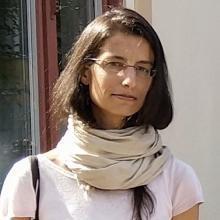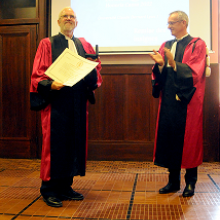Bioinformatics, Phylogeny and Evolutionary Genomics Group
Members
Maîtresse de conférences
UCBL
Tel: 04 72 44 84 87

Professeure des universités
UCBL
Tel: 33 04 26 23 44 76
Doctorante
UCBL
Enseignant-chercheur CPJ
UCBL

Directeur de recherche
CNRS
Tel: 33 04 72 44 62 97

Professeur d'université émérite
UCBL
Tel: 04 72 44 85 60
Ingénieur d'études CDD
CNRS

Directeur de recherche
CNRS
Tel: 33 04 72 43 11 67

Maîtresse de conférences
UCBL
Tel: 33 04 72 43 29 18
Doctorante
UCBL

Chargée de recherche
CNRS
Tel: 33 04 72 44 85 60

Directeur de recherche
CNRS
Tel: 04 72 44 84 87

Chargée de recherche
CNRS
Tel: 04 72 43 13 44

Directeur de recherche
CNRS

Maître de conférences
UCBL
Tel: 04 72 43 35 83

Chargée de recherche
CNRS
Tel: 04 72 44 81 42
Doctorant
CNRS

Directeur de recherche
CNRS
Tel: 33 04 72 44 62 96

Chargée de recherche
CNRS
Tel: 04 72 43 26 28
Doctorant
UCBL

Chercheur invité
UCBL
Our group focuses on two main axes: phylogenomics (i.e. the inference of evolutionary history based on genomics data) and evolutionary genomics (understanding the molecular and population processes that drive genome evolution). We see genomes both as a subject of research (how do genomes evolve, why are they structured the way they are?), but also as a main source of empirical knowledge about the macroevolutionary patterns (what do they tell us about the history of life on Earth?), or about the phenotypes and life-history strategies of organisms. Our works heavily rely on methodological developments (bioinformatics, modeling and statistical inference).
Evolution of genome architecture and expression
Genomes are the result of a long-term evolutionary process, shaped by multiple evolutionary forces. Some genomic features are adaptive (i.e. are beneficial for the fitness of organisms), others result from non-adaptive processes (random drift and biased gene conversion - BGC) or are caused by conflicts between multiple levels of selection (e.g. meiotic drive or the spread of selfish genetic elements). We explore different aspects of genome architecture (base composition landscapes, genome structure and size, impact of transposable elements, …) or functioning (gene expression, lncRNAs, epigenetic landscapes, …), and try to disentangle the relative contribution of adaptive and non-adaptive processes to their evolution. For this purpose, we consider both the molecular mechanisms (mutation, repair, recombination) and the population processes (selection, drift, BGC, …) that shape genetic variation.
Phylogenomics
We are interested in reconstructing the history of life on Earth. This research unfolds along several axes. First, we develop phylogenomic databases of aligned genetic sequences (e.g. BIBI, RiboDB or HOGENOM). Second, we conduct methodological research on how to accurately reconstruct deep phylogenies, infer divergence times, reconstruct ancestral genetic sequences, gene repertoires and life-history traits. This methodological work is translated into publicly available software programs (e.g. SeaView, PhyloBayes, Coevol). Finally, we apply these approaches to several important problems, among which: reconstructing the phylogeny of animals, of archaea, or the global tree of life; using phylogenies and ancestral gene repertoires to investigate the evolution of complex systems and the emergence of molecular and cellular functions in the three domains of life; reconstructing ancestral genetic sequences, a research activity that has industrial and biotechnological applications.
Teaching and outreach
We teach at University Lyon 1 (Master Bioinfo@Lyon), INSA, ENS Lyon, we organize bioinformatics internships. We regularly give conferences on evolution (tree of life, human evolution, genetic diversity, …).
Prospective students and postdocs are invited to apply, as we often welcome visitors for internships or research projects.
Keywords: Molecular evolution and Population Genomics; Phylogenomics; Computational Genomics; Comparative genomics; Bioinformatics; Statistical inference.
Publications
Display of 361 to 390 publications on 1110 in total
Evolution of sex-biased gene expression in a dioecious plant
Nature Plants . 2 : 16168
Journal article
see the publicationNo Evidence That Nitrogen Limitation Influences the Elemental Composition of Isopod Transcriptomes and Proteomes
Molecular Biology and Evolution . 33 ( 10 ) : 2605–2620
Journal article
see the publicationRecombination Rate Variation Modulates Gene Sequence Evolution Mainly via GC-Biased Gene Conversion, Not Hill–Robertson Interference, in an Avian System
Molecular Biology and Evolution . 33 ( 1 ) : 216-227
Journal article
see the publicationGC‐biased gene conversion links the recombination landscape and demography to genomic base composition
BioEssays . 37 ( 12 ) : 1317-1326
Journal article
see the publicationLinked selection and recombination rate variation drive the evolution of the genomic landscape of differentiation across the speciation continuum of Ficedula flycatchers
Genome Research . 25 ( 11 ) : 1656-1665
Journal article
see the publicationEvolutionary Consequences of DNA Methylation on the GC Content in Vertebrate Genomes
G3 . 5 ( 3 ) : 441-447
Journal article
see the publicationVariation in Rural African Gut Microbiota Is Strongly Correlated with Colonization by Entamoeba and Subsistence
PLoS Genetics . 11 ( 11 ) : e1005658
Journal article
see the publicationIdentifying new sex-linked genes through BAC sequencing in the dioecious plant Silene latifolia
BMC Genomics . 16 : 546
Journal article
see the publicationAssessment of polycarbonate filter in a molecular analytical system for the microbiological quality monitoring of recycled waters onboard ISS
Life Sciences in Space Research . 6 : 29-35
Journal article
see the publicationNontuberculous Mycobacteria: An Underestimated Cause of Bioprosthetic Valve Infective Endocarditis
Open Forum Infectious Diseases . 2 ( 2 )
DOI: 10.1093/ofid/ofv047
Journal article
see the publicationAdaptation in toxic environments: arsenic Genomic Islands in the bacterial genus $Thiomonas$
PLoS ONE . 10 ( 9 ) : 0139011
Journal article
see the publicationGC-Content evolution in bacterial genomes: The biased gene conversion hypothesis expands
PLoS Genetics . 11 ( 2 ) : 1-20
Journal article
see the publicationQuantification of GC-biased gene conversion in the human genome
Genome Research . 25 ( 8 ) : 1215 - 1228
Journal article
see the publicationOptimization of multiplexed RADseq libraries using low-cost adaptors
Genetica . 143 ( 2 ) : 139-143
Journal article
see the publicationAnalyse de 32 souches de Legionella pneumophila de sévérités variables afin d'identifier les déterminants de la pathogénicité
JOBIM 2015 - 16èmes Journées Ouvertes en BIologie, Informatique et Mathématiques .
Poster
see the publicationEvolutionary history of phosphatidylinositol- 3-kinases: ancestral origin in eukaryotes and complex duplication patterns
BMC Evolutionary Biology . 15 : 226
Journal article
see the publicationMolecular and functional evolution of the fungal diterpene synthase genes
BMC Microbiology . 15 ( 1 ) : 221
Journal article
see the publicationleBIBIQBPP: a set of databases and a webtool for automatic phylogenetic analysis of prokaryotic sequences
BMC Bioinformatics . 16 ( 1 ) : 251
Journal article
see the publicationA Toolbox for Nonlinear Regression in R: The Package nistools
Journal of Statistical Software . 66 : 1-21
Journal article
see the publicationEvolution of Helicobacter: Acquisition by Gastric Species of Two Histidine-Rich Proteins Essential for Colonization
PLoS Pathogens . 11 ( 12 ) : e1005312
Journal article
see the publicationExploration of Frankia genomes to identify genetic determinants involved in sporogenesis: Towards promising tracks to understand in plant sporuration
18th International Meeting on Frankia and Actinorhizal plants .
Poster
see the publicationEvolution and Design Governing Signal Precision and Amplification in a Bacterial Chemosensory Pathway
PLoS Genetics . 11 ( 8 ) : e1005460
Journal article
see the publicationTaxonomy and Phylogeny of Prokaryotes
Environmental Microbiology: Fundamentals and Applications . 978-94-017-9118-2 : 145-190
Book chapter
see the publicationDraft genome sequence of Mesotoga strain PhosAC3, a mesophilic member of the bacterial order Thermotogales, isolated from a digestor treating phosphogypsum in Tunisia
Standards in Genomic Sciences . 10
Journal article
see the publicationGenome-wide survey of two-component signal transduction systems in the plant growth-promoting bacterium Azospirillum
BMC Genomics . 16 : 833
Journal article
see the publicationExtending the conserved phylogenetic core of \textitarchaea disentangles the evolution of the third domain of life
Molecular Biology and Evolution . 32 : 1242-54
Journal article
see the publicationConstitutive arsenite oxidase expression detected in arsenic-hypertolerant Pseudomonas xanthomarina S11
Research in Microbiology . 166 : 205-14
Journal article
see the publicationDegeneration of the Nonrecombining Regions in the Mating-Type Chromosomes of the Anther-Smut Fungi
Molecular Biology and Evolution . 32 ( 4 ) : 928-943
Journal article
see the publicationChaos of Rearrangements in the Mating-Type Chromosomes of the Anther-Smut Fungus Microbotryum lychnidis-dioicae
Genetics . 200 ( 4 ) : 1275-1284
Journal article
see the publicationSex and parasites: genomic and transcriptomic analysis of Microbotryum lychnidis-dioicae, the biotrophic and plant-castrating anther smut fungus
BMC Genomics . 16 ( 461 ) : np
Journal article
see the publication
